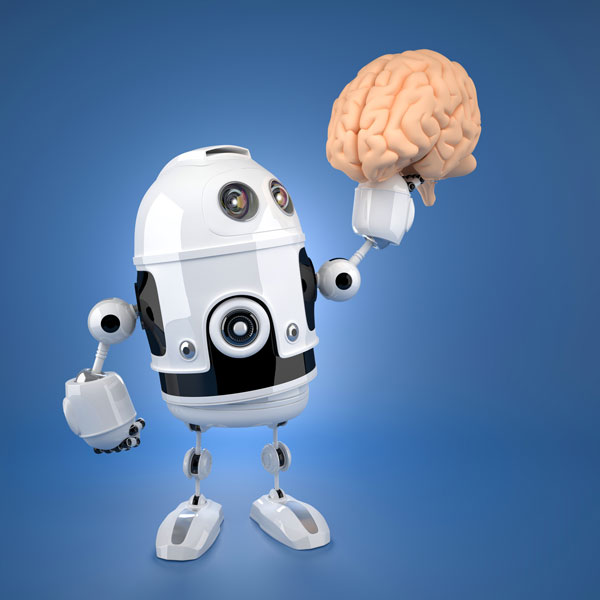Soon, advanced computers won’t just be driving you to work, they’ll be selling you stuff as well. We can already see this in the form of chatbots.
Chatbots are artificially intelligent pieces of software, capable of maintaining a conversation with a human. While they aren’t perfect yet, they have markedly improved in recent years, leading some to claim 2017 will be the year that we finally see mass adoption.
Chatbots can already do some incredible things, such as operating a medical helpline, helping you plan your vacation, and even talking with you when you can’t sleep.
In the world of advertising, this represents a huge step. Chatbots are personalised, to the point, and all knowing, thanks to consumer tracking, big data, and machine learning. With the likes of Facebook jumping aboard, all of this is right in your pocket.
The rise of chatbots
According to American research firm Gartner, 85% of customer interactions will be managed without a human by 2020. Given this, businesses are beginning to invest and experiment in the space. Their bots have the capacity to do a great many things – provide personalised support for many customers at once (not just VIPs), recommend products and services, and assist during and after a sale. All without the need for humans.
The strength of bots is their ability to have tailored conversations, give personalised offers, and offer convenient purchases. Armed with data and serious computing, they can analyse patterns in our speech to decide when and what to advertise. They can also increase engagement and bring your brand personality to life.
In addition to all of that, bots are novel and a little bit human. This means we are less likely to get distracted than we would be with other digital options, like banner ads.
Personal assistant or sales assistant?
“Hey, I see you’re going to Gary’s party on Saturday. Need any help?”
What sounds like a conversation is the future of direct to consumer advertising. Chatbots won’t just remind me about Gary’s party, but accept his invitation, order a gift based on Gary’s preferences, arrange an Uber to the party, and maybe even move around tomorrow’s appointments for me.
Is this a personal assistant or advertising? The potential of chatbots is that they will be both: advertising will be intelligent, help will be on-demand, and it will feel like we’re being assisted rather than sold to.
The bots will recognise patterns, learn from us, and their suggestions will be there at exactly the right time. And unlike the personalised suggestions already provided online courtesy of consumer tracking, this advertisement will have a human touch and embrace natural conversation – the new wave of advertising will allow us to upscale personal selling in a way we’ve never seen before.
But they’re not there just yet
One thing standing in the way of widespread chatbot adoption is that they are a little creepy. This cause of this creepiness is two-fold.
First, there’s the uncanny valley. This is the phenomena, where we perceive a non-human as creepy because it is almost (but not quite) human. Some suggest that the answer here lies in not asking the bot to “act” human, rather, just let it be a bot.
A second source of “creepiness” is a feeling of invasiveness that might arise if the bot appears to know something that you haven’t told it. It is a delicate balance for bots: they should know enough to be helpful, but not enough to give consumers a sense of invaded privacy. They must use the information responsibly to build trust, and aim to provide a valuable service.
But the technology isn’t mature yet. This manifested spectacularly last year when a Microsoft chatbot named Tay started sending out offensive tweets. Even the CEO of a virtual assistant company has warned of the damage of a “low-IQ” bot. If advertisers exploit this technology before it’s ready, bots could become just another thing to be ignored when the “ads are on”.
This isn’t about the transaction, it’s about the relationship.
Looking forward
Artificial intelligence is constantly progressing, spurred on in part by competitions like the Loebner prize. With enough data and time, chatbots could become very convincing. In addition to seeing our bots become more seamless and eloquent, we could also see them more integrated across different technologies and functions: already users of virtual assistants can utilise them across loads of devices.
Likewise, bots can talk to other bots, coordinating a valuable experience for the consumer behind the scenes. Imagine how much more important these interactions will become as we enter our increasingly connected future. In addition to knowing what Gary wants for his birthday, will our bot also lock the house behind us and drive us to the party? If on the way home the bot reminds us to stop and get milk and some antacids (maybe that second slice of cake wasn’t a great idea), will we think of this as advertising or just thoughtful?
It’s a call we will all be making soon, as these bots increasingly enter our home and work lives.
In many ways, they are already here.
Authors: Kate Letheren, Postdoctoral Research Fellow, Queensland University of Technology
Charmaine Glavas; International Business Lecturer, Queensland University of Technology

